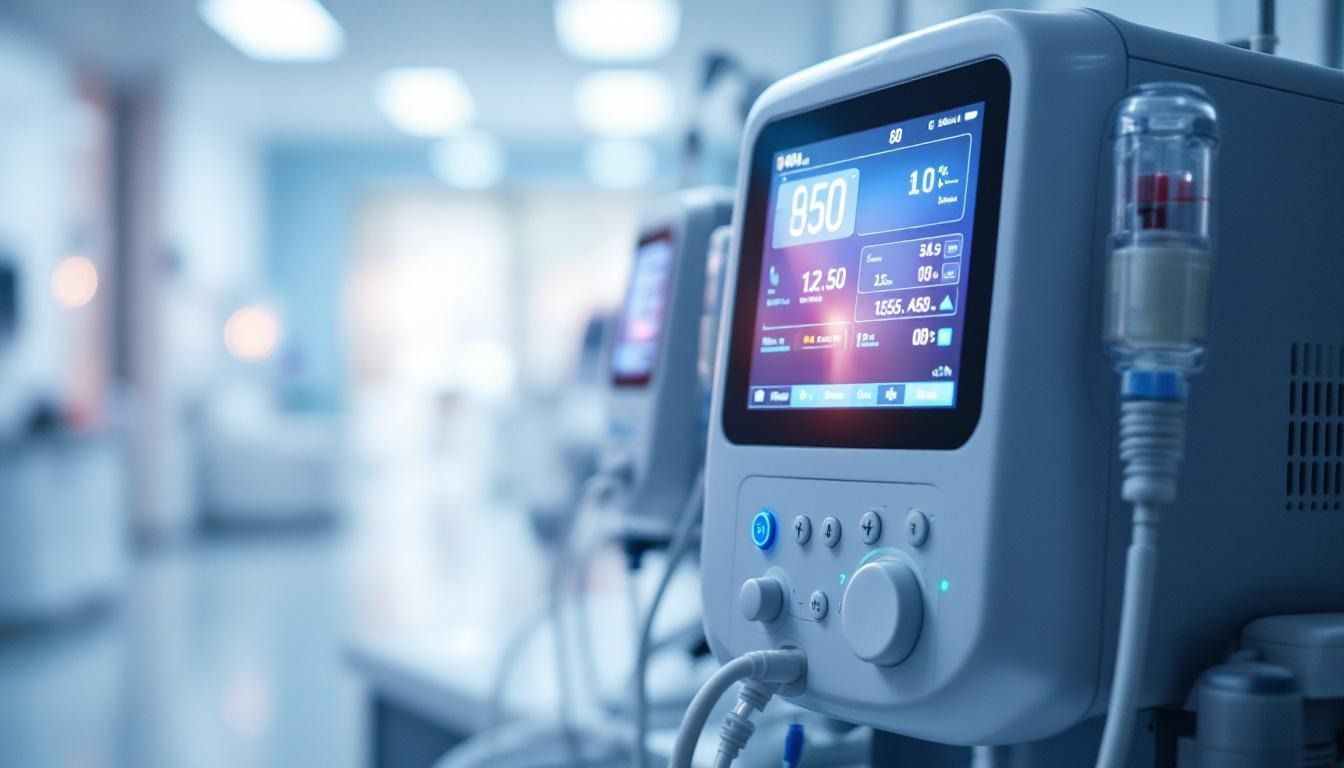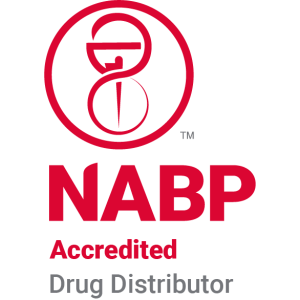The Importance of Personalized Nutrition Plans for TPN Patients
Understanding the Critical Role of Personalization in TPN Therapy
Total parenteral nutrition (TPN) is a vital treatment modality for patients with severe or chronic gastrointestinal impairments. As the healthcare landscape advances, so does the recognition of the importance of personalized nutrition plans in optimizing TPN therapy. Moving beyond generic formulations, individualized approaches leverage cutting-edge diagnostics, technological innovations, and clinical assessments to tailor nutritional support to each patient's unique needs. This editorial explores the clinical importance of these strategies, their benefits for health outcomes and safety, and the latest research guiding their implementation.
Significance of Personalized Nutrition in ICU Settings
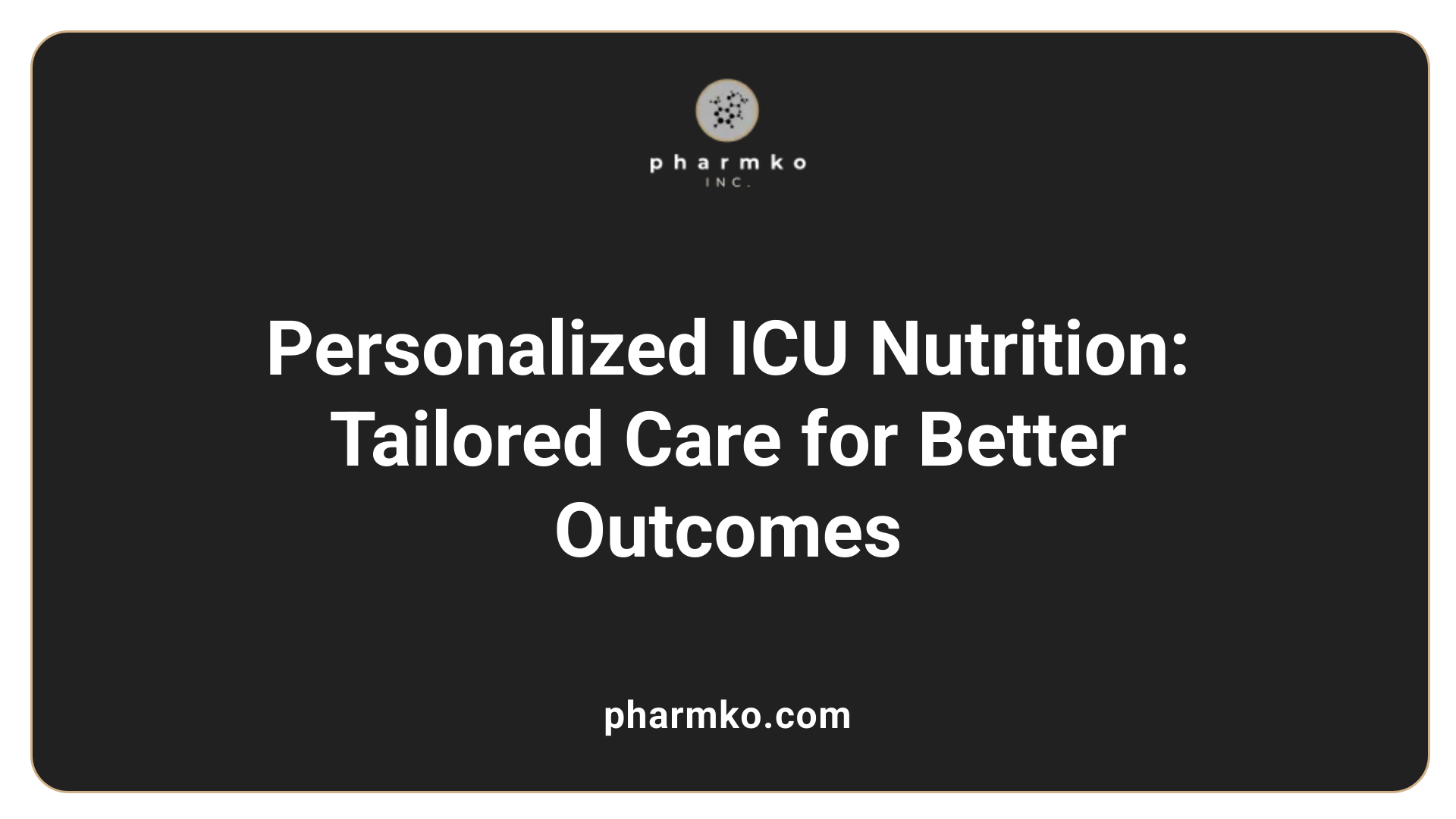
Why is the emphasis on ICU nutrition personalization important for patient outcomes?
In critically ill patients, proper nutrition management is vital to recovery and survival. Personalized ICU nutrition involves tailoring dietary plans based on patient-specific factors such as metabolic rate, disease state, and genetic predispositions. This individualized approach helps meet the unique caloric and protein needs of each patient, which can vary widely in the ICU setting.
Personalized nutrition supports better clinical outcomes by reducing complications like muscle wasting, immune suppression, and infections. It also assists in maintaining gut integrity and function, especially when using enteral nutrition (EN). Implementing personalized plans has been linked to lower mortality rates, shorter ICU stays, and improved quality of life.
When should early enteral or parenteral nutrition begin?
Guidelines recommend initiating nutritional support within the first 48 hours of ICU admission. Early support through EN is preferred because it maintains intestinal function, reduces infection risk, and supports immune responses. When EN isn't feasible, parenteral nutrition (PN) offers a safe alternative.
Both routes can be started promptly, but their timing and choice depend on the patient's clinical stability and specific needs. Advances in technology now enable more precise decisions, optimizing the benefits of early nutritional intervention.
How does indirect calorimetry (IC) influence nutritional planning after stabilization?
After patients stabilize—typically around post-ICU day 2–3—indirect calorimetry (IC) is recommended to measure energy expenditure accurately. IC assesses the patient's resting energy expenditure (REE), which serves as a foundation for personalizing their nutritional intake.
Administering approximately 70% of measured energy requirements during the initial ICU phase helps prevent overfeeding and related metabolic complications. As patients recover, increasing intake to match measured energy expenditure supports better outcomes and recovery.
Using IC data guides clinicians in adjusting calorie and protein provision, ensuring that nutritional therapy aligns with ongoing metabolic demands.
What role does monitoring play in personalizing ICU nutrition?
Effective nutrition personalization relies heavily on continual assessment of energy and protein delivery relative to set targets. Healthcare professionals utilize computerized nutrition monitoring systems to track these parameters in real-time.
Monitoring enables timely adjustments, ensuring patients receive adequate but not excessive nutrients. For example, starting with low-dose protein (~0.8 g/kg/d) during early ICU days, then increasing to ≥1.2 g/kg/d as the patient's condition stabilizes, minimizes risks of renal injury or metabolic stress.
Furthermore, evaluating micronutrients and vitamins is crucial, especially in patients undergoing procedures like continuous renal replacement therapy (CRRT). Deficiencies discovered through lab assessments can be corrected with targeted supplementation.
What are the future directions for improving ICU nutrition personalization?
Emerging technologies including muscle assessment tools such as ultrasound, CT scans, and bioimpedance analysis (BIA) are promising for evaluating muscle mass and nutrition risk more precisely. These tools can monitor the response to nutritional therapy and guide adjustments.
Dietary interventions with anabolic nutrients like beta-hydroxy-beta-methylbutyrate (HMB), creatine, and leucine are showing potential to enhance muscle synthesis and recovery. Although further research is needed, these innovations could refine personalized strategies.
The integration of advanced diagnostic tools, artificial intelligence (AI), and metabolomics will likely revolutionize ICU nutrition. AI can analyze complex data sets to optimize individualized plans, improving safety and efficacy.
How is personalized nutrition extended in the post-ICU phase?
After ICU discharge, ongoing assessment of energy needs and muscle health remains important. Continuous use of energy expenditure measurement and muscle monitoring ensures that nutritional support adapts to the patient’s evolving condition.
Research into rehabilitation, including exercise and pharmacologic agents aimed at anabolic pathways, is ongoing. Such strategies might further improve functional recovery and long-term health.
Why is individualized ICU nutrition essential for addressing malnutrition?
Malnutrition is common in critically ill patients and is associated with increased risks of muscle atrophy, neuropathy, higher mortality, and extended hospital stays. Providing adequate calories and proteins through personalized plans helps counteract these risks.
Through tailored nutritional strategies, clinicians can better meet each patient's needs, support immune function, and promote resilience during recovery. This approach underscores the importance of customizing interventions based on individual clinical profiles.
How do technological innovations facilitate personalized ICU nutrition?
Advances in monitoring technology, including the use of AI, metabolomics, transcriptomics, and genomics, enhance understanding of each patient’s specific metabolic state. These approaches enable more precise nutritional plans that consider genetic variability and microbiome composition.
While cost and infrastructure barriers exist, the future of ICU nutrition personalization is promising. Sophisticated diagnostics and digital systems could make individualized care more accessible, ultimately improving outcomes.
| Aspect | Approach | Description |
|---|---|---|
| Timing of support | Early support within 48 hours | Initiate EN or PN promptly to prevent malnutrition and support recovery. |
| Nutritional assessment | Indirect calorimetry (IC) | Measure energy expenditure to tailor calorie delivery. |
| Nutrient monitoring | Real-time data and AI systems | Track delivery and adjust to target needs. |
| Protein dosing | Start low (~0.8 g/kg/d), increase later | Adjust as patients stabilize, prevent renal or metabolic issues. |
| Muscle evaluation | Ultrasound, BIA, CT | Monitor muscle mass and function. |
| Future tools | Metabolomics, transcriptomics | Understand cellular responses and optimize therapy. |
| Post-ICU support | Continual assessment | Ensure ongoing adequacy of nutrition for recovery. |
Personalized ICU nutrition is a critical part of modern critical care, combining clinical judgment and technological innovation to improve patient outcomes.
Timing and Initiation of Nutritional Support
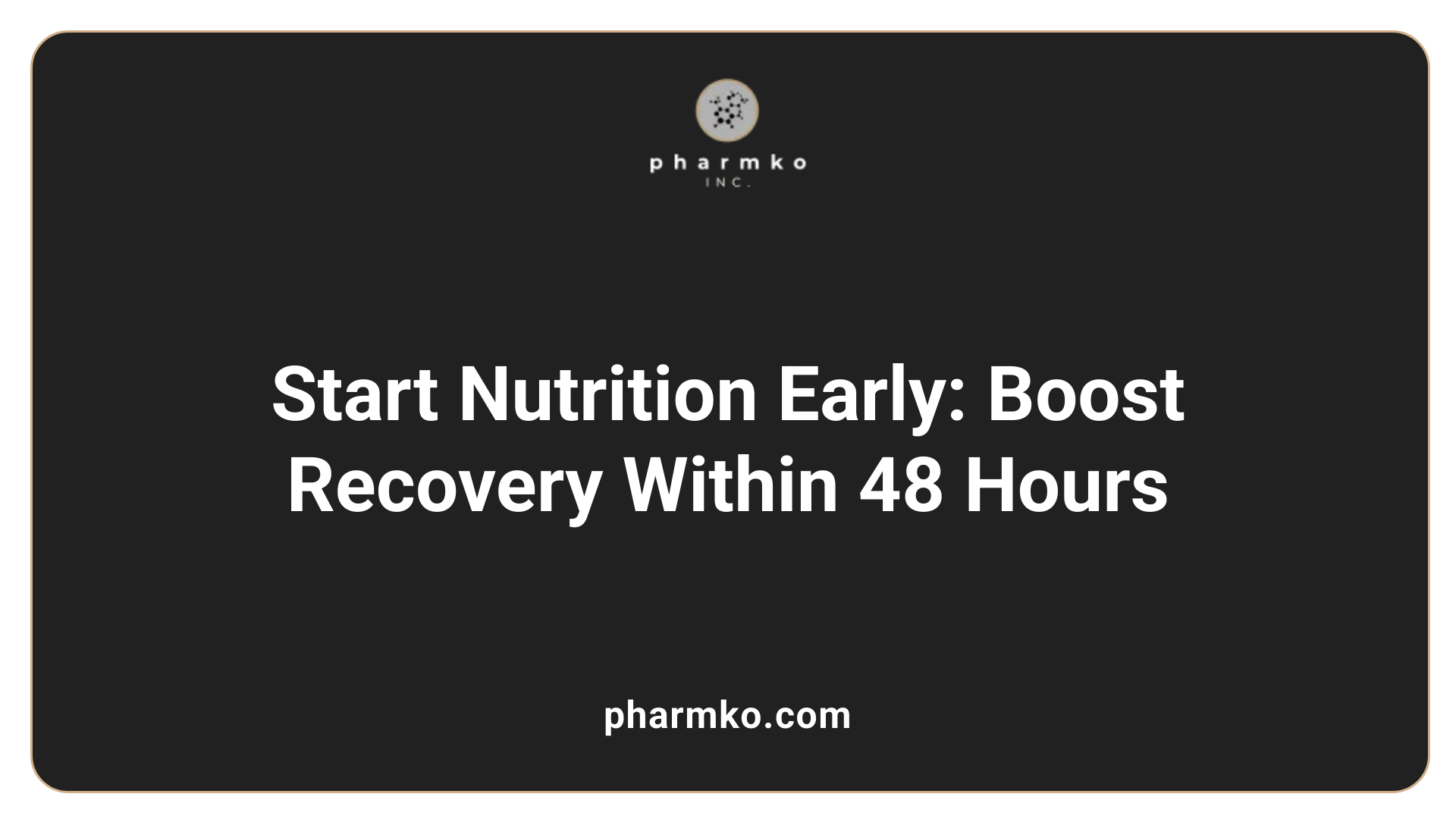
What are the benefits of personalized nutrition plans?
Personalized nutrition plans are increasingly recognized as essential in critical care and hospital settings. These tailored approaches focus on individual patient needs, considering factors like genetics, metabolic responses, and health history. Implementing such plans has demonstrated tangible health benefits.
Research shows that personalized plans result in significant improvements in clinical outcomes. Patients often experience better weight management, lipid profiles, and reduced triglyceride levels, which collectively lower cardiovascular risks. Mental health benefits are also notable, with individuals reporting roughly twice the improvement in mood, better sleep quality, and increased energy levels.
Furthermore, personalized nutrition supports gut health by aligning dietary components with individual microbiome profiles. It helps mitigate inflammation, a common issue in critically ill patients, thereby promoting healing and recovery. Such diets can adapt to the unique metabolic responses of each person, even among genetically identical individuals, ensuring that nutritional interventions are both effective and sustainable.
Overall, science-based personalized nutrition enhances the ability to meet specific health objectives, preventing malnutrition and supporting longer-term recovery. It paves the way for improved quality of life and reduces the risk of complications associated with standardized feeding regimens.
Benefits of early initiation of nutrition within 48 hours
Starting nutrition early—within the first 48 hours of ICU admission—has been shown to significantly improve patient outcomes. Early initiation helps preserve muscle mass, supports immune function, and reduces the risk of infections and other complications.
Timely nutritional support can prevent the progression of malnutrition, which is linked to increased mortality, longer hospital stays, and higher healthcare costs. Early feeding, especially when personalized, ensures that caloric and protein goals are met promptly, thus stabilizing metabolic functions.
The suitability of isocaloric PN when early EN isn't feasible
While enteral nutrition (EN) is preferred for its ability to maintain gut integrity and reduce infection risk, it is not always possible for every patient. In such cases, parenteral nutrition (PN) offers a safe and effective alternative.
Recent data support that isocaloric PN—providing the same caloric intake as EN—can be administered safely without increasing risks, even in the early stages of ICU care. This approach ensures that patients receive adequate energy and amino acids during periods when EN cannot be initiated or tolerated.
Balancing timing with patient stability for optimal outcomes
Determining when to start nutrition support depends heavily on patient stability. While early feeding is beneficial, it is crucial to assess individual readiness—such as hemodynamic stability and gastrointestinal function.
Personalized timing considers the patient’s clinical status, avoiding overfeeding in unstable patients who may be at risk of complications like refeeding syndrome. In stable patients, early nutrition supports recovery, but in unstable cases, delaying until stabilization is appropriate.
Advancements in monitoring technologies, like indirect calorimetry, help guide appropriate timing by accurately measuring energy expenditure, ensuring that nutrition support aligns with patient capacity.
In summary, early initiation of ICU nutrition within 48 hours offers many benefits, particularly when tailored to the patient's stability. When early enteral feeding isn't feasible, isocaloric parenteral nutrition provides a reliable alternative. Proper assessment and timing are essential to optimize recovery and improve overall outcomes.
Monitoring and Measuring Energy and Nutritional Requirements

How does personalized nutrition impact health outcomes and safety in TPN patients?
Personalized nutrition significantly enhances health outcomes and safety for patients receiving Total Parenteral Nutrition (TPN). By customizing nutrient delivery based on each individual’s metabolic needs, clinicians can better meet global caloric and protein requirements while minimizing risks.
Advanced assessment tools such as indirect calorimetry (IC) play a crucial role in this process. IC measures energy expenditure (EE) accurately after initial stabilization, typically around post-ICU days 2–3. This measurement helps clinicians determine the precise caloric needs of each patient, enabling tailored nutrition plans that match actual metabolic demands.
Initial nutritional support aims to deliver approximately 70% of the measured EE during the early ICU phase. As the patient stabilizes, the nutritional plan is gradually adjusted to meet or slightly exceed the measured EE, promoting effective recovery and reducing complications from overfeeding or underfeeding.
Modern computerized systems are instrumental in monitoring energy and protein intake. These digital tools compare delivered nutrition against pre-set targets in real time, ensuring precise adjustments are made rapidly. This vigilant monitoring supports optimal nutritional balance, reduces errors, and prevents deficiencies or excesses.
Personalized TPN strategies, supported by technological innovations like AI, further enhance safety. AI-driven algorithms integrate data from indirect calorimetry, blood biomarkers, microbiome profiles, and even genetic information. This comprehensive approach leads to more accurate estimation of energy needs, personalized nutrient formulations, and dynamic adjustments in response to changing patient conditions.
In patients who cannot tolerate enteral or oral feeding, early initiation of personalized TPN, guided by these assessments and continuous monitoring, prevents malnutrition, muscle wasting, and immune dysfunction. Regular evaluation of micronutrient levels and muscle mass (via ultrasound, bioelectrical impedance, or imaging) complements nutritional adjustments, reducing risks of deficiencies and associated complications.
Overall, integrating advanced diagnostics, data-driven monitoring, and personalized plans ensures safer nutrition therapy. It not only supports shorter ICU stays and better functional recovery but also minimizes the risk of life-threatening metabolic or infectious complications, making personalized TPN a cornerstone of critical care nutrition.
Role of Technology and Diagnostics in Personalization
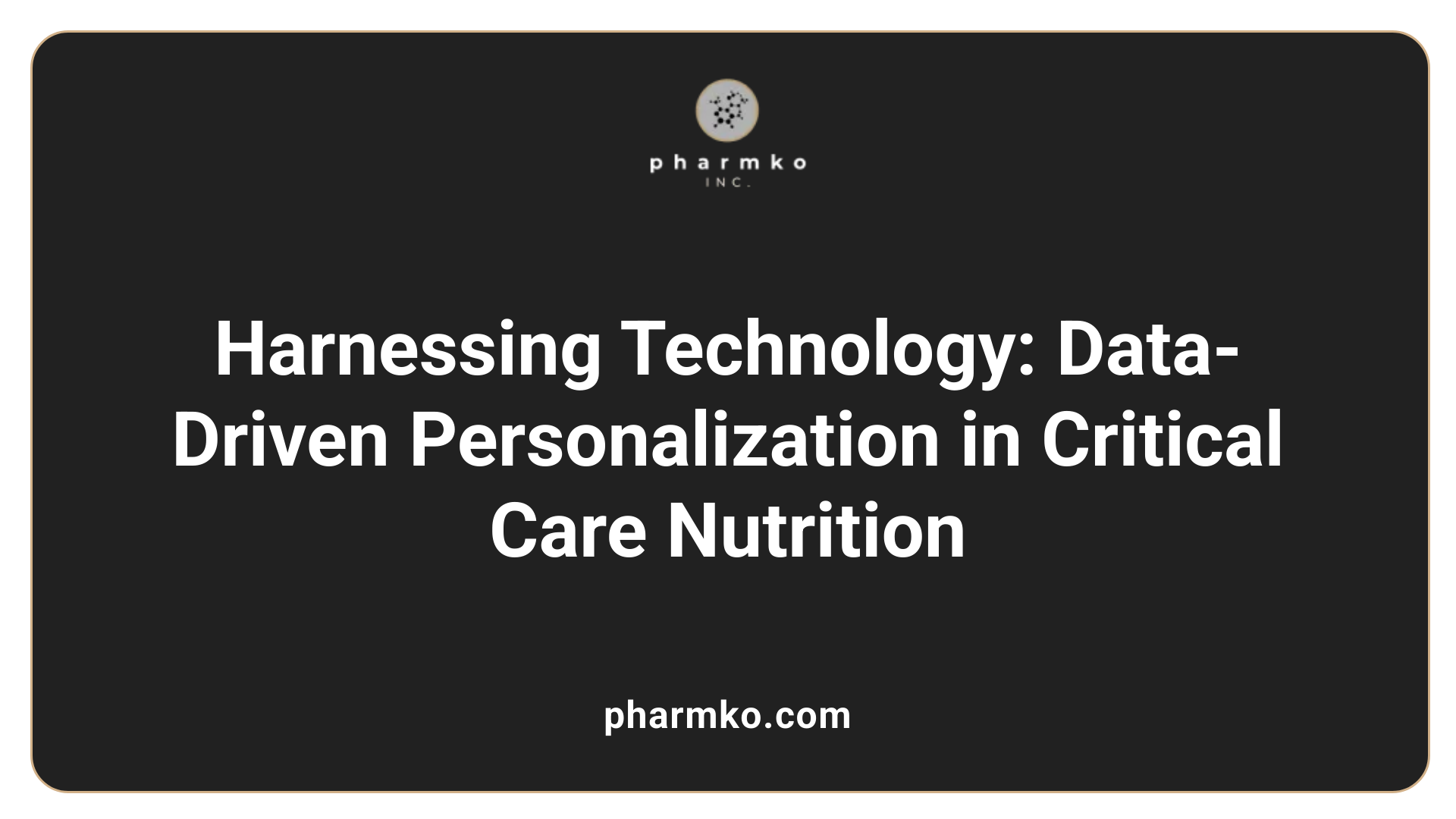
What is the clinical importance of individualized nutrition plans in TPN therapy?
Personalized TPN therapy is crucial because it ensures that each patient receives nutrition tailored to their specific needs, which can vary widely based on age, underlying health conditions, metabolic rate, and disease severity.
Customizing the composition of TPN, including lipids, amino acids, carbohydrates, electrolytes, vitamins, and minerals, helps prevent metabolic imbalances such as hyperglycemia, electrolyte disturbances, and refeeding syndrome. This personalization minimizes the risk of complications and supports better clinical outcomes.
Continuous assessment through blood tests and clinical monitoring enables healthcare providers to fine-tune the nutritional formula, adapting to the patient's evolving condition. This dynamic approach maximizes safety and therapeutic effectiveness.
Personalized TPN also considers disease-specific factors, such as inflammation, immune response, and drug interactions, which can influence nutritional needs. For instance, patients with liver or kidney dysfunction require different electrolyte management.
By meeting individual needs precisely, tailored nutrition supports tissue repair, immune function, and energy production, accelerating recovery and minimizing hospital stay.
Overall, individualized TPN is vital in managing complex cases where standard formulas are insufficient, promoting optimal health, and preventing deficiencies or overfeeding.
Use of AI, metabolomics, transcriptomics, and genomics
Technological advancements are transforming how clinicians approach nutritional support. AI algorithms analyze large datasets to predict individual nutritional requirements based on clinical parameters, laboratory results, and genetic information.
Metabolomics examines small molecules in blood or tissue, providing real-time insights into metabolic status and nutrient processing, allowing for precise adjustments in TPN composition.
Transcriptomics and genomics deepen this understanding by revealing how genetic variations influence nutrient metabolism, susceptibility to deficiencies, or reactions to specific nutrients. These insights enable truly personalized therapy, addressing genetic predispositions.
Integrating these technologies helps identify hidden deficiencies, optimize nutrient delivery, and predict potential adverse reactions before they occur.
Advantages of technological integration in assessing needs
Using advanced diagnostics improves accuracy in estimating energy expenditure and nutrient requirements. For example, indirect calorimetry measures actual energy expenditure, guiding caloric provision.
Automated systems and AI-driven platforms facilitate real-time monitoring of infusion data, laboratory results, and patient responses, allowing timely adjustments.
Computerized monitoring systems reduce errors, streamline workflows, and provide comprehensive oversight of nutrition therapy.
Future prospects involving muscle monitors and advanced diagnostics
Emerging tools like ultrasound, bioelectrical impedance analysis (BIA), and CT scans can assess muscle mass and quality, which correlates with nutritional status.
In the future, muscle monitors could become standard in ICU settings, helping detect early muscle wasting and guide anabolic interventions.
Combining these diagnostics with AI and genomics promises a holistic approach to nutrition, where therapy adapts not just to biochemical data but also to physical and functional parameters.
Advances in personalized nutrition will likely lead to proactive, tailored interventions that improve recovery times, functional outcomes, and quality of life for critically ill and chronic disease patients.
| Technology/Method | Application | Benefits |
|---|---|---|
| AI and Machine Learning | Data analysis and prediction of nutritional needs | Accurate, dynamic adjustments |
| Metabolomics | Small molecule profiling | Real-time metabolic insights |
| Genomics & Transcriptomics | Genetic and gene expression analysis | Personalized therapy based on genetic profile |
| Muscle Monitors (Ultrasound, BIA, CT) | Assess muscle mass and function | Early detection of wasting, guide anabolic therapy |
| Indirect Calorimetry | Measure energy expenditure | Precise caloric requirement |
| Advanced Diagnostics | Microbiome and other molecular testing | Tailored nutrient interventions |
References
- Examining recent studies and reviews on technological innovations in nutritional support.
- Research articles emphasizing the role of personalized nutrition in improving clinical outcomes.
In conclusion, integrating cutting-edge diagnostics and AI into ICU and hospital nutrition programs paves the way for more precise, safe, and effective personalized therapy, ultimately promoting better patient recovery and long-term health.
Micronutrient and Vitamin Monitoring
What are the benefits of TPN nutrition?
Total parenteral nutrition (TPN) offers significant advantages for patients who cannot meet their nutritional needs through the gastrointestinal (GI) tract. By delivering essential nutrients directly into the bloodstream via a central venous catheter, TPN ensures that patients maintain adequate caloric, protein, vitamin, and mineral levels, which is crucial during periods of GI dysfunction.
This method of nutrition support helps prevent malnutrition, supports immune function, and promotes tissue repair and healing. It is particularly beneficial for individuals with conditions like Crohn's disease, short bowel syndrome, gastrointestinal surgeries, or severe malnutrition where oral or enteral feeding is inadequate or impossible.
One of the strengths of TPN is its ability to be tailored precisely to each patient’s unique needs. The formulation can be customized based on lab results, clinical condition, and specific deficiencies, encompassing macronutrients, micronutrients, and electrolytes. This is especially important for patients with high nutritional losses, such as those undergoing continuous renal replacement therapy (CRRT), where nutrient depletion is common.
Although TPN carries potential risks such as bloodstream infections, liver complications, and metabolic disturbances, vigilant monitoring and professional oversight can greatly reduce these complications. Advances in technology and sterile techniques further enhance safety and effectiveness.
Overall, TPN acts as a vital supportive therapy to sustain nutrition, improve recovery, and enhance overall outcomes in critically ill or intestinal failure patients. Proper evaluation and continuous adjustment are foundational to maximizing its benefits.
Monitoring Muscle Mass and Functional Status
What is the clinical importance of individualized nutrition plans in TPN therapy?
Personalized nutrition strategies are fundamental in parenteral nutrition (PN) therapy because each patient’s needs can vary widely based on their age, disease process, metabolic profile, and overall health status. Tailoring the nutrient composition—including lipids, amino acids, glucose, vitamins, and minerals—ensures that the patient receives precisely what their body requires to recover and maintain function.
This customization helps prevent potential complications such as refeeding syndrome, electrolyte imbalances, and hyperglycemia. Regular assessments through laboratory tests and clinical signs guide necessary adjustments, optimizing safety and therapeutic outcomes.
In patients with complex conditions, personalized TPN reduces the risk of deficiencies and toxicities, supporting recovery and improving quality of life. Additionally, considering factors like drug interactions and disease-specific needs allows clinicians to tweak formulations for better efficacy.
Overall, individualized TPN design promotes effective nutritional support where oral or enteral routes are inadequate or impossible. It plays a crucial role in enabling healing, reducing hospital stay duration, and enhancing long-term health prognosis.
Research, Guidelines, and Future Directions
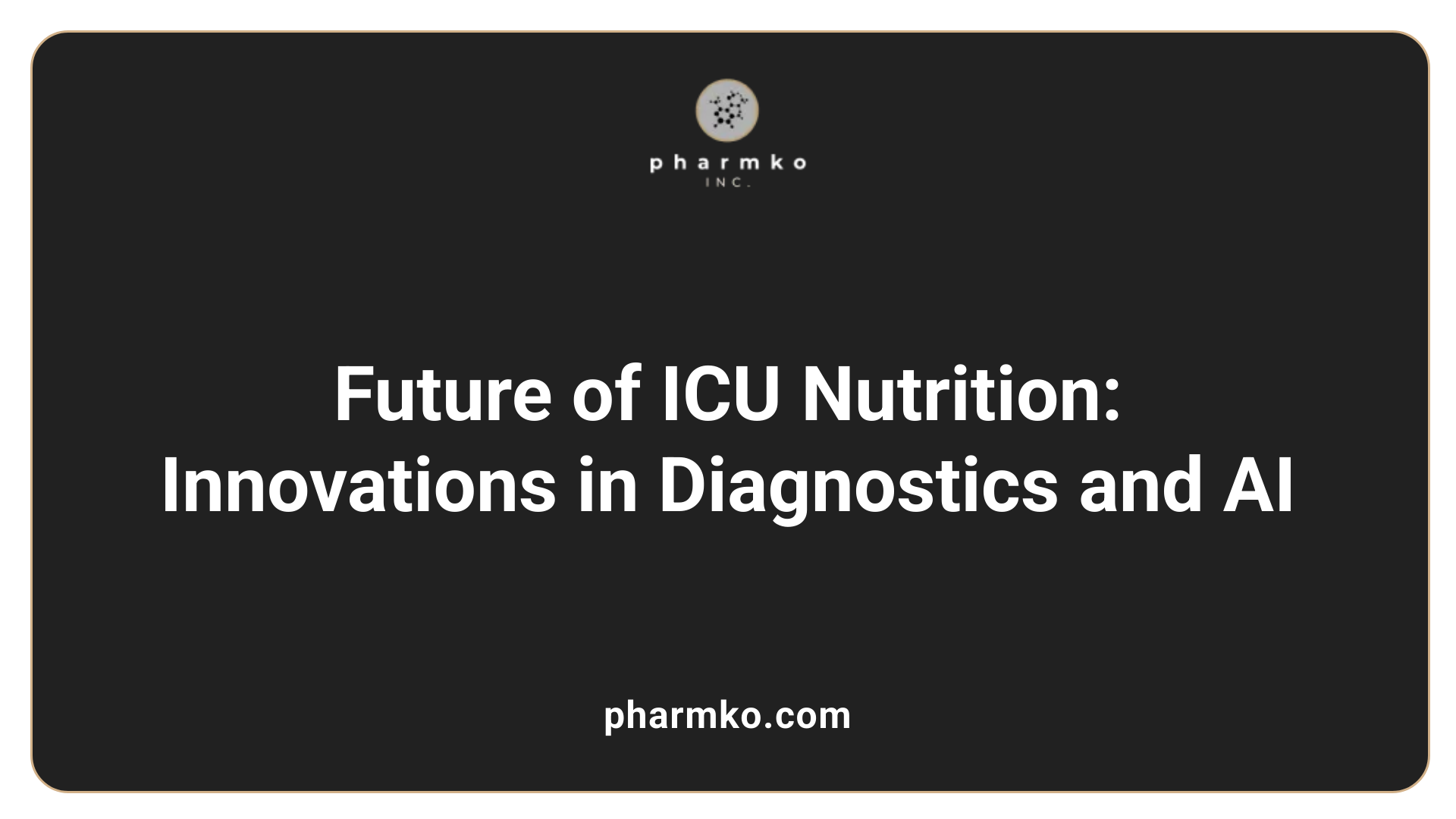
What is the clinical importance of individualized nutrition plans in TPN therapy?
Personalized nutrition plans are vital for patients receiving total parenteral nutrition (TPN) because they ensure that each individual’s specific nutritional needs are met accurately. This customization takes into account factors like age, weight, underlying medical conditions, and metabolic status.
In TPN therapy, the composition of the nutrient mixture—including lipids, amino acids, dextrose, electrolytes, vitamins, and minerals—is tailored to prevent metabolic disturbances. For example, adjusting glucose levels can help avoid hyperglycemia, while electrolyte management prevents imbalances that could lead to arrhythmias or neuromuscular issues.
Continuous assessment through laboratory tests and clinical observation allows healthcare providers to fine-tune the TPN formulation, reducing risks like refeeding syndrome, liver complications, or deficiencies. Individualizing nutrition also involves considering potential interactions with medications and the patient’s disease-specific needs, which enhances safety and therapeutic outcomes.
Moreover, personalized TPN supports recovery by promoting optimal nutrient delivery, prevents deficiencies, and accommodates complex health states such as bowel failure, inflammatory bowel disease, or cancer cachexia. This approach is especially crucial when oral or enteral feeding is not feasible.
Supporting Evidence from Latest Research
Recent studies underline the importance of tailored nutrition strategies. A systematic review published in The Lancet highlighted that personalized nutritional support in hospitalized patients led to improved clinical outcomes, including reduced complications and shorter hospital stays. Innovations in diagnostics, like metabolomics and genomics, now allow for even more precise personalization.
Emerging Guidelines and Best Practices
Guidelines now emphasize early assessment of nutritional needs, including using tools like indirect calorimetry to measure energy expenditure accurately after the patient stabilizes. This method helps set precise calorie goals, avoiding over- or underfeeding.
Best practices include integrating continuous monitoring systems to compare delivered nutrition against targets, allowing real-time adjustments. Parenteral formulations are increasingly customized using software and pharmacy automation, ensuring each patient’s nutritional plan aligns with their evolving clinical condition.
Future Prospects with Anabolic Nutrients and Advanced Diagnostics
The future of personalized ICU nutrition involves groundbreaking research into anabolic nutrients like beta-hydroxy-beta-methylbutyrate (HMB), creatine, and leucine, which may enhance muscle preservation and recovery. While promising, these require further clinical validation.
Advanced diagnostics—such as ultrasound, bioelectrical impedance analysis (BIA), and CT scans—are being explored to assess muscle mass and body composition quickly and non-invasively. These tools could refine nutritional planning further, ensuring muscle preservation and functional recovery.
Genomic, transcriptomic, and microbiome analyses are also paving the way for highly individualized diets, potentially customizing micronutrient and probiotic intake based on each patient’s genetic makeup.
Barriers and Opportunities
Implementing personalized nutrition remains challenged by costs, infrastructure, and personnel shortages. However, advances in AI and digital health tools are poised to streamline monitoring and data integration, making personalized ICU nutrition more accessible.
Concluding Trends
Integration of innovative diagnostics, targeted nutrients, and technological support systems promises to transform ICU nutrition. Continuous research aims to optimize outcomes for critically ill patients, reduce complications, and facilitate long-term recovery.
| Aspect | Current Practice | Future Directions |
|---|---|---|
| Personalization method | Laboratory assessment | Genomic and microbiome profiling |
| Nutrient adjustment | Based on labs and clinical signs | AI-driven real-time adjustments |
| Diagnostic tools | Indirect calorimetry | Ultrasound, BIA, advanced imaging |
| Nutritional components | Standard formulas | Customized formulas with anabolic nutrients |
| Challenges | Cost, infrastructure | Technology integration, cost reduction |
This continuous evolution underscores the importance of embracing innovation to meet individual needs effectively for optimal recovery and health in ICU patients.
Enhancing Recovery Through Multimodal Support
What is the clinical importance of individualized nutrition plans in TPN therapy?
Personalized nutrition strategies in TPN (total parenteral nutrition) are vital because they cater to each patient's specific needs, improving overall safety and outcomes. Every patient has unique requirements based on age, disease severity, metabolic rate, and current health status.
In TPN therapy, tailoring the nutrient mix—including lipids, amino acids, carbohydrates, electrolytes, vitamins, and minerals—helps prevent metabolic imbalances such as hyperglycemia, electrolyte disturbances, or refeeding syndrome, especially in malnourished or critically ill individuals.
Regular laboratory assessments and clinical monitoring enable healthcare professionals to adjust the TPN formulation dynamically. This ongoing evaluation ensures that nutritional intake aligns with the patient's evolving needs, promoting effective recovery and preventing deficiencies.
In complex medical conditions, personalized TPN reduces the risk of complications associated with generic approaches, such as infections, liver problems, or nutrient toxicities. It also considers potential drug-nutrient interactions, optimizing pharmacologic and nutritional therapy.
Overall, by individualizing TPN, clinicians support better patient outcomes, faster recovery, and enhanced quality of life, particularly for those unable to meet their nutritional needs through oral or enteral routes.
Post-ICU nutrition and muscle health assessment
After ICU discharge, ongoing evaluation of nutrition and muscle mass is essential to sustain recovery. Technologies such as ultrasound, bioelectrical impedance analysis (BIA), and CT scans are emerging tools to assess muscle quantity and quality.
Monitoring muscle health helps identify patients at risk of atrophy and functional decline. Tailoring nutritional plans based on these assessments ensures adequate protein provision (often ≥1.2 g/kg/day as stability is achieved) and supports muscle regeneration.
Integration of rehabilitation, exercise, and anabolic pharmacologics
Combining nutritional support with physical rehabilitation enhances recovery. Resistance exercises stimulate muscle synthesis, while anabolic agents like HMB, creatine, or leucine show promise in improving muscle mass.
Research suggests that early initiation of targeted exercise and anabolic supplementation during or after ICU stay can counteract atrophy, improve strength, and reduce long-term disabilities. Although these interventions are promising, further studies are needed to establish definitive protocols.
The importance of ongoing monitoring in long-term TPN patients
For patients on long-term TPN, continuous monitoring is more crucial than ever. Regular lab tests for blood glucose, electrolytes, liver function, and micronutrient levels help prevent complications like fatty liver, cholestasis, or bone demineralization.
Personalized adjustments based on these assessments improve safety, optimize nutrient delivery, and adapt to changes in health status. Additionally, advances in digital health, including AI-driven systems, assist in precise monitoring, reducing errors, and tailoring support.
Future developments include integrating metabolomics, genomics, and microbiome profiling to refine individualized nutrition further, ultimately aiming to improve long-term outcomes and quality of life.
| Aspect | Focus | Purpose |
|---|---|---|
| Nutritional tailoring | Macronutrients, micronutrients, medication interactions | Prevent deficiencies, metabolic complications |
| Muscle health | Ultrasound, BIA, CT | Detect atrophy, guide protein needs |
| Exercise & anabolic agents | Resistance training, supplements | Promote muscle synthesis, functional recovery |
| Monitoring | Blood tests, digital tools | Optimize safety, adapt therapy |
| Future innovations | Omics sciences, AI | Enhance personalization |
Summary and Future Outlook
Personalized nutrition plans are the cornerstone of effective TPN therapy, significantly impacting clinical outcomes, patient safety, and long-term health. By integrating advanced diagnostics, technological innovations, and continuous monitoring, healthcare providers can tailor nutritional support to individual needs, thereby reducing complications and optimizing recovery. Emerging research underscores the potential of anabolic nutrients and sophisticated biomarker assessments to further refine TPN strategies. As personalized nutrition continues to evolve, its implementation promises to transform critical care and long-term patient management, ensuring that interventions are both effective and precisely aligned with each patient's unique biological and clinical profile.
References
- Personalized nutrition therapy in critical care: 10 expert ...
- Personalized Nutrition Strategies for Patients in the Intensive Care Unit
- New research highlights benefits of personalized nutrition for patients
- Parenteral Nutrition: What it Is, Uses & Types - Cleveland Clinic
- The Benefits of Personalized Nutrition - Dynamic DNA Labs
- Personalizing Nutritional Interventions
- [PDF] The Hitchhiker's Guide to Parenteral Nutrition Management for Adult ...
- Home Total Parenteral Nutrition (Home TPN) - Nutrishare
- Clinical | Research Topics | Food Systems, Nutrition, and Health
- Parenteral nutrition - Wikipedia







